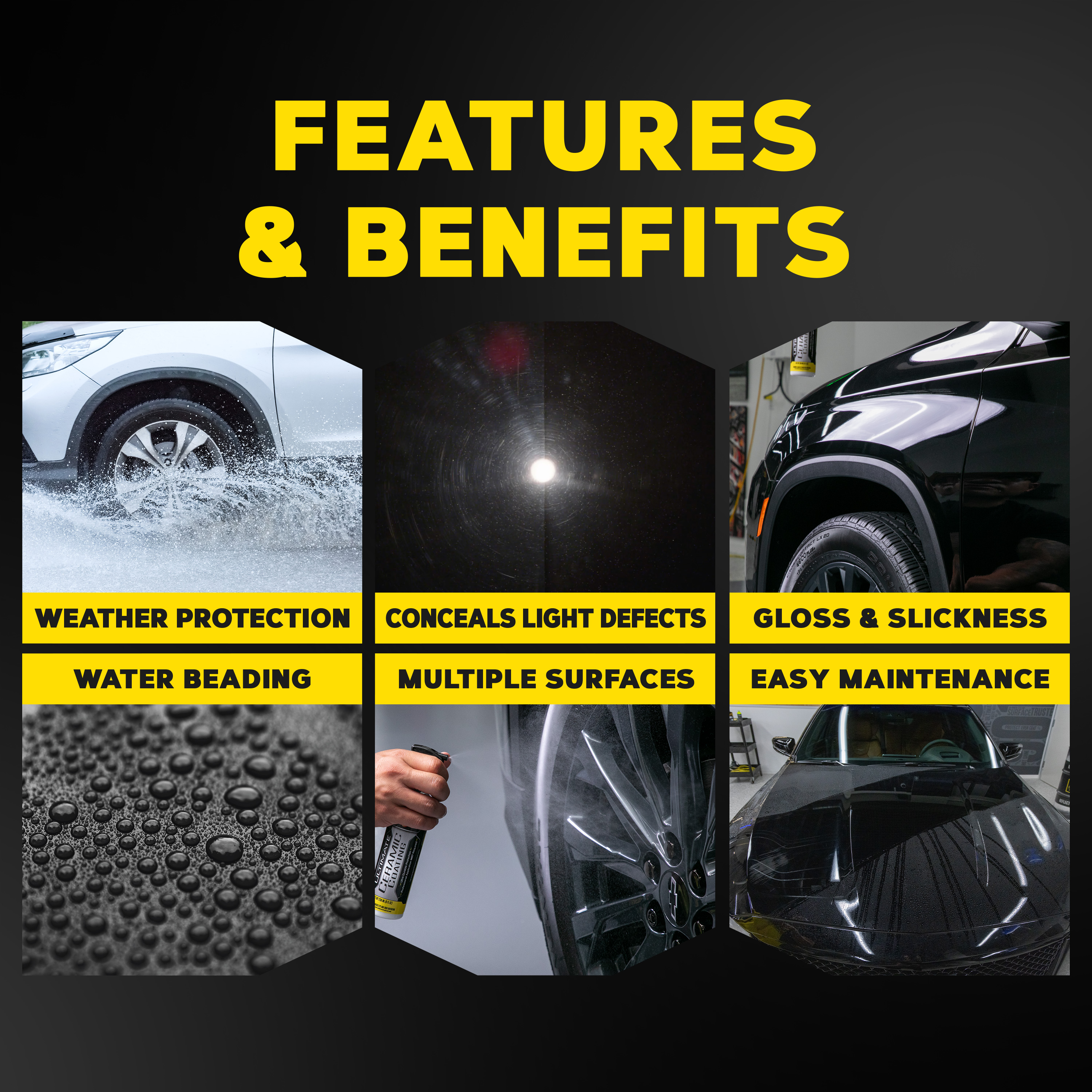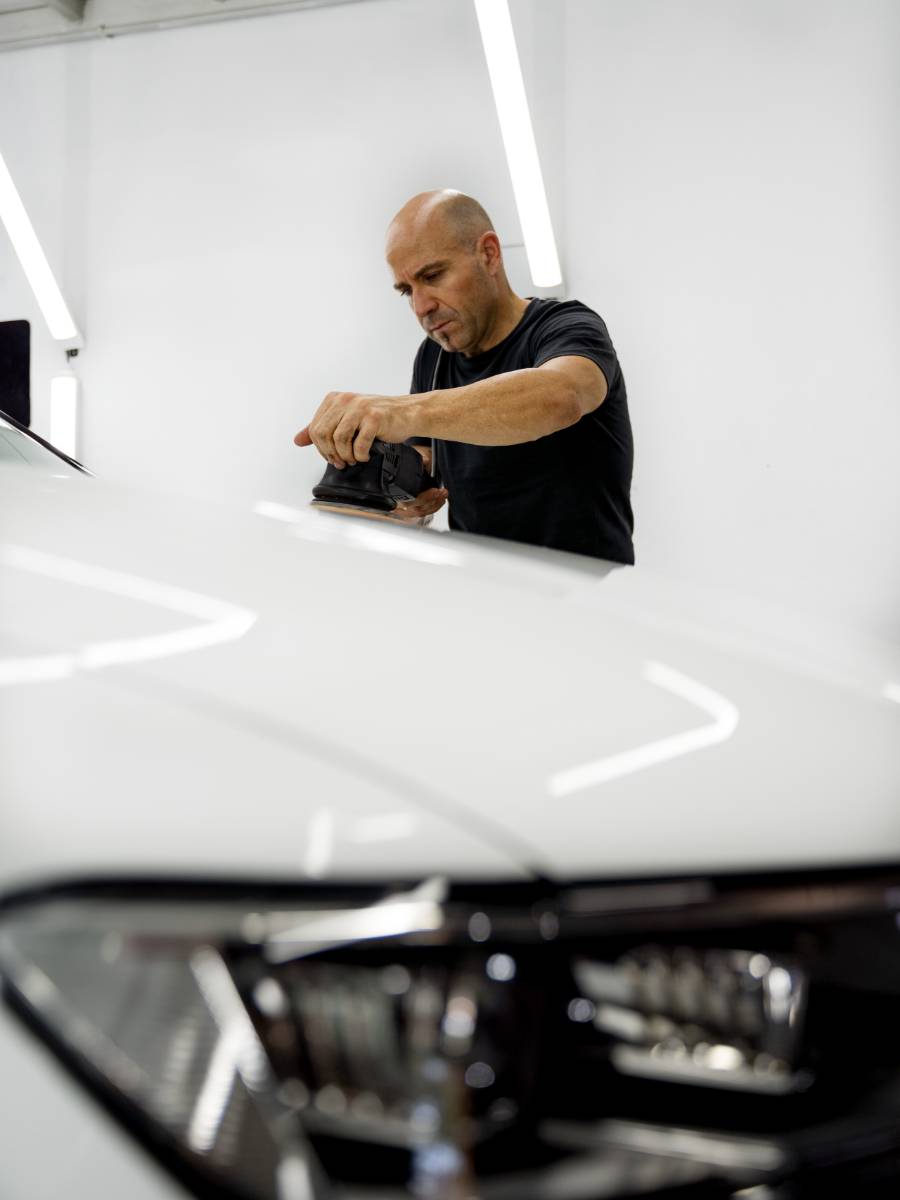Protect Your Car from the Elements with Ceramic Coating Technology
Ceramic Finishing vs. Traditional Wax: Which Gives Much Better Long-Term Defense?
The argument in between ceramic finishes and typical wax for vehicle protection has garnered substantial focus amongst vehicle fanatics and specialists alike. Ceramic finishings boast remarkable longevity and resistance to environmental aspects, yet the complexity of their application raises questions regarding access and functionality.
Review of Ceramic Coating
Ceramic coating has gained considerable appeal amongst vehicle fanatics and detailers alike due to its innovative protective qualities. This cutting-edge modern technology is created to produce a resilient, hydrophobic guard over a car's paint surface area, dramatically boosting its resistance to environmental impurities such as dust, UV rays, and chemical spots. Unlike traditional wax, which offers a short-lived layer of defense, ceramic coverings bond at a molecular level with the paint, supplying long-lasting toughness-- usually extending past two years with correct maintenance.
The application process entails careful prep work of the car's surface area, consisting of cleansing and brightening to guarantee ideal attachment. As soon as used, the finishing cures to create a durable layer that not just adds depth and gloss to the paint yet additionally streamlines upkeep. With its hydrophobic properties, ceramic covering enables water and dirt to move off even more quickly, minimizing the regularity of laundries and decreasing the risk of swirl marks.
Furthermore, ceramic coverings are readily available in various formulas, permitting customers to choose items tailored to their certain demands and choices. Generally, ceramic finishing stands for a significant improvement in paint protection innovation, providing premium efficiency contrasted to conventional choices.
Review of Typical Wax
Traditionally considered a staple in automotive treatment, wax works as a popular option for those looking for a simple approach to enhance and safeguard their lorry's paint - ceramic coating. Automotive wax commonly makes up natural ingredients, such as carnauba, or synthetic compounds, made to create a safety layer externally of the paint. This layer not just improves the vehicle's gloss and radiate but likewise offers an obstacle versus environmental contaminants
The application of wax is typically straightforward, making it available for both professionals and DIY enthusiasts. It can be used by hand or maker, permitting flexibility in the outlining process. When used, wax needs a treating duration, after which it sets to form a protective shell. Wax is likewise known for its capability to fend off water, promoting a beading result that assists in the avoidance of water spots and deterioration.
Nevertheless, while wax works for enhancing the visual charm of a lorry, it is necessary to keep in mind that the security it supplies may require a lot more constant reapplication contrasted to alternative products, such as ceramic finishes. Generally, typical wax remains a favored alternative for those focusing on simplicity of usage and instant visual improvement.
Sturdiness and Longevity Comparison
While both ceramic coatings and conventional wax offer protective advantages for automotive paint, their longevity and longevity differ substantially. Conventional wax, usually made from all-natural carnauba or artificial polymers, typically offers a protective layer that lasts roughly three to 6 months. This fairly brief life expectancy requires normal reapplication to preserve optimum security.
In comparison, ceramic finishings are engineered from advanced nanotechnology, creating a covalent bond with the paint surface. This causes a robust, hydrophobic layer that can withstand for 2 to five years, relying on the product and environmental conditions. The exceptional sturdiness of ceramic finishes is attributed to their chemical structure, which supplies boosted resistance to scratches, UV rays, and oxidation.

Security Versus Environmental Elements
Securing an automobile's paint from ecological elements is important for maintaining its look and worth with time. Automobiles are regularly revealed to a variety of elements, including UV rays, bird droppings, tree sap, acid rainfall, and roadway crud, all of which can compromise the stability of the paintwork.
Ceramic finishings give a robust protection against these ecological assailants. Unlike standard wax, which can break down promptly under UV direct exposure, ceramic finishes create a long lasting, hydrophobic layer that resists the hazardous results of sunlight and toxic wastes. This sophisticated modern technology produces a chemical bond with the automobile's surface area, supplying superior protection that lasts for several years, also in rough conditions.
In contrast, ceramic click this link coverings maintain their safety top qualities much longer, considerably lowering the danger of paint damages and making sure that the vehicle keeps its visual allure. As an outcome, ceramic coverings are progressively recognized as the superior selection for long-term security versus environmental aspects.
Application and Upkeep Distinctions
The approaches of application and subsequent maintenance for ceramic layers and traditional wax vary significantly, influencing the overall customer experience and effectiveness of each product. Ceramic finishings need an even more detailed application procedure, normally involving surface area preparation that includes cleaning, decontaminating, and polishing the car. Once the surface prepares, the ceramic finishing is applied in a regulated atmosphere, usually needing expert know-how to make sure proper healing and bonding to the paint.

While both products enhance car appearance, the longer-lasting protection offered by ceramic layers might warrant their initial investment, in spite of the more demanding application procedure. Alternatively, typical wax stays a popular choice for those looking for a simpler, albeit short-term, option.

Final Thought
Finally, ceramic coatings demonstrate considerable benefits over traditional wax in terms of longevity and environmental management. With a life expectancy prolonging two to 5 years and superior resistance to UV rays, dust, and chemical discolorations, ceramic coverings use an extra reliable option for long-lasting car maintenance. Although the application procedure might require expert competence, the resulting price financial savings and lowered regularity of reapplication highlight the value of ceramic coatings for those looking for optimum lorry security.
The argument in between ceramic finishes and standard wax for lorry security has amassed substantial interest amongst automobile lovers and specialists alike. Unlike conventional wax, which provides a short-term layer of protection, ceramic finishes bond at a molecular level with the paint, using lasting longevity-- usually expanding past 2 years with appropriate maintenance.
While both ceramic finishes and conventional wax deal safety advantages for automobile paint, their resilience and long life differ substantially. For car fanatics seeking lasting security, ceramic layers provide a compelling benefit over navigate here standard wax items.
In conclusion, ceramic finishings show substantial benefits over traditional wax in terms of durability and environmental security.